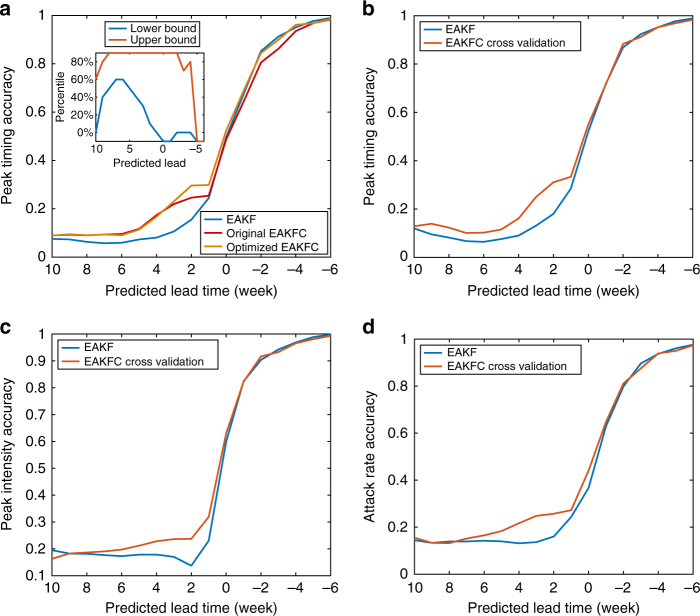Fig. 5.
Optimization of the selective rule for the EAKFC. a We used the simulated annealing algorithm to find the best selective rule that maximizes the improvement of peak timing accuracy using the EAKFC. The optimization is performed on the predictions for 95 cities in the United States from 2003–2004 through 2013–2014 seasons, excluding the 2008–2009 and 2009–2010 pandemic seasons. The plot shows the prediction accuracy of peak timing for the EAKF, the original EAKFC in which the correction procedure is applied indiscriminately, and the optimized EAKFC that adaptively adopts error correction according to the selective rule. b–d Forecast accuracy of peak timing (b), peak intensity (c), and attack rate (d) of the EAKFC for the 2-fold cross validation. We randomly chose half the historical outbreaks and used these to optimize the selective rule, and then performed retrospective forecasts for the remaining records. Curves are averaged over 100 independent realizations of this cross validation

